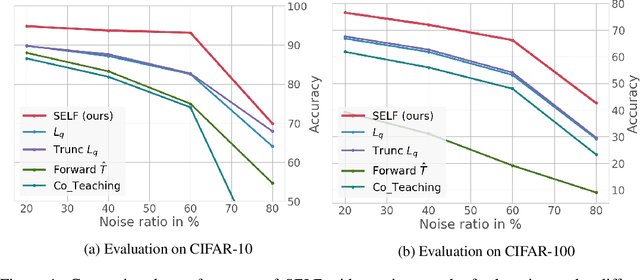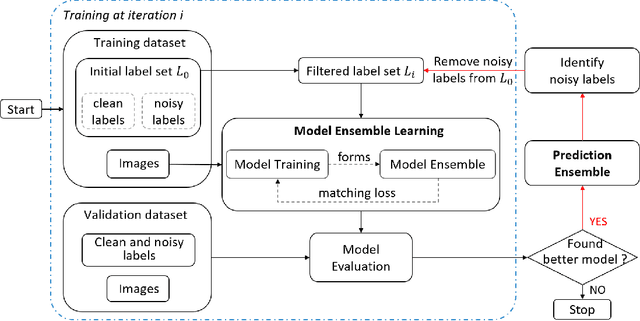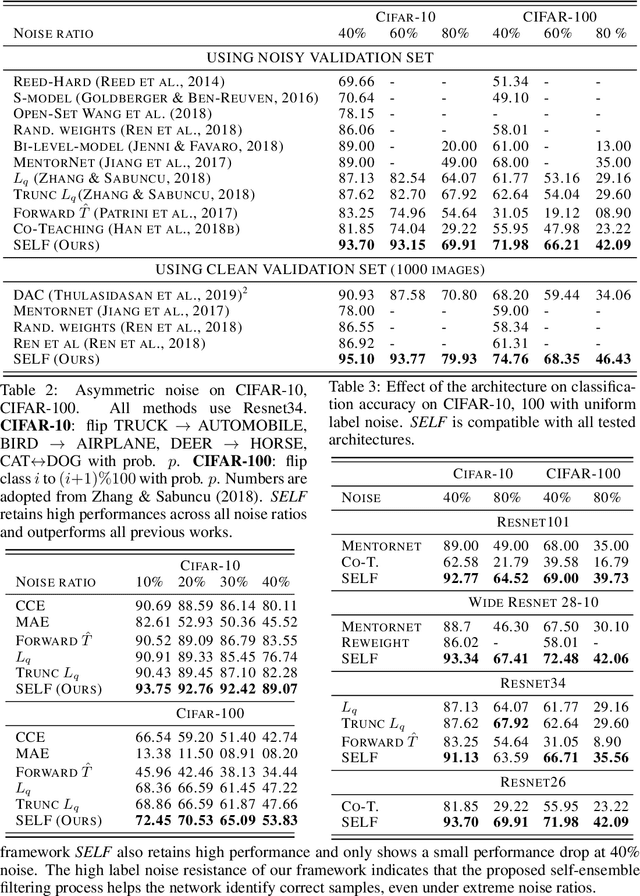Thi Hoai Phuong Nguyen
SELF: Learning to Filter Noisy Labels with Self-Ensembling
Oct 04, 2019



Abstract:Deep neural networks (DNNs) have been shown to over-fit a dataset when being trained with noisy labels for a long enough time. To overcome this problem, we present a simple and effective method self-ensemble label filtering (SELF) to progressively filter out the wrong labels during training. Our method improves the task performance by gradually allowing supervision only from the potentially non-noisy (clean) labels and stops learning on the filtered noisy labels. For the filtering, we form running averages of predictions over the entire training dataset using the network output at different training epochs. We show that these ensemble estimates yield more accurate identification of inconsistent predictions throughout training than the single estimates of the network at the most recent training epoch. While filtered samples are removed entirely from the supervised training loss, we dynamically leverage them via semi-supervised learning in the unsupervised loss. We demonstrate the positive effect of such an approach on various image classification tasks under both symmetric and asymmetric label noise and at different noise ratios. It substantially outperforms all previous works on noise-aware learning across different datasets and can be applied to a broad set of network architectures.
DeepUSPS: Deep Robust Unsupervised Saliency Prediction With Self-Supervision
Sep 28, 2019



Abstract:Deep neural network (DNN) based salient object detection in images based on high-quality labels is expensive. Alternative unsupervised approaches rely on careful selection of multiple handcrafted saliency methods to generate noisy pseudo-ground-truth labels.In this work, we propose a two-stage mechanism for robust unsupervised object saliency prediction, where the first stage involves refinement of the noisy pseudo-labels generated from different handcrafted methods.Each handcrafted method is substituted by a deep network that learns to generate the pseudo-labels. These labels are refined incrementally in multiple iterations via our proposed self-supervision technique. In the second stage, the refined labels produced from multiple networks representing multiple saliency methods are used to train the actual saliency detection network. We show that this self-learning procedure outperforms all the existing unsupervised methods over different datasets. Results are even comparable to those of fully-supervised state-of-the-art approaches.
 Add to Chrome
Add to Chrome Add to Firefox
Add to Firefox Add to Edge
Add to Edge